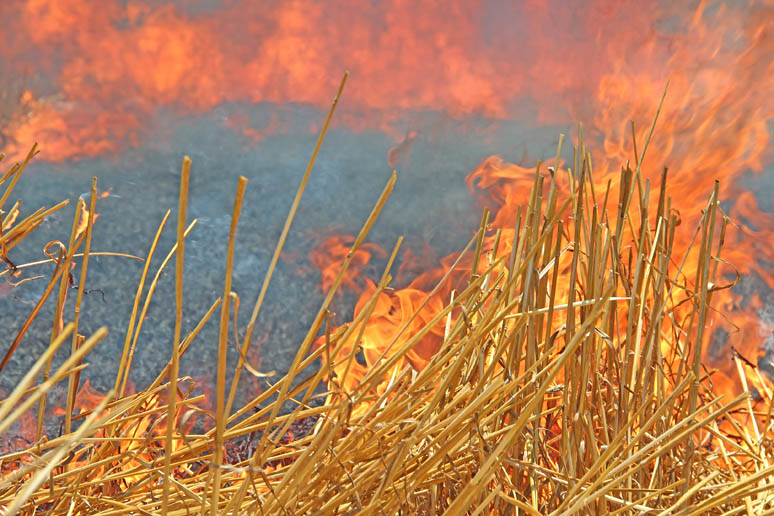
Mid-South wheat harvest 2-3 weeks ahead of normal
A quickly-maturing wheat crop presented some fertilizer timing challenges for producers, which in some cases may have resulted in lower yields.While yields were variable in most Mid-South states, Tennessee wheat crop has been exceptional, with yields consistently above 70 bushels an acre.The early harvest of wheat could bode well for double-cropped soybeans.

An early spring pushed the Mid-South winter wheat crop into one of the earliest harvests in recent memory, although yields have been variable in many areas. Here’s more from university specialists:
Louisiana
According to Ed Twidwell, small grains specialist at the LSU AgCenter in Baton Rouge, the state’s wheat producers have completed harvest of the 2012 wheat crop. “We wrapped everything up last week (May 20-26). We actually had a few producers who started harvesting wheat the last couple of days of April.”
While early, wheat yields have been disappointing, according to Twidwell. “It’s been so wet this winter. The plants just didn’t have a chance to tiller out as well as we had hoped. Then we got a fair amount of disease coming in, which knocked the yields back too.”
Quality has been off as well, noted Twidwell. “I think one reason for that is it got so hot between mid-April and the first part of May. The grain matured a lot faster than it normally does, and I’m not sure it had time to completely fill out the heads.
“We have had some producers with some good yields, around 70 bushels. But we’ve also had some around 20 bushels to 30 bushels. It’s been all over the board. Last year, we heard of a lot of 80 bushel and 90 bushel yields. We have not heard that this year.”
Harvest of the crop was two weeks ahead of normal, which has allowed producers to plant double-cropped soybeans earlier than normal, “which could be very advantageous for soybean yields,” Twidwell noted.
Tennessee
Tennessee wheat yields have been excellent, according to Chris Main, wheat and cotton specialist for the state. “So far, we are running exceptionally above average. We have excellent test weights on everything. I haven’t heard a yield lower than 75 bushels per acre. Most of the wheat yields I’ve heard or seen have been from the mid-80s to 90 bushels. I’ve been in combines with producers cutting 105 bushels. It’s an exceptional wheat crop.”
The wheat is about 3 weeks early on top of that, noted Main.
Main said good weather for finishing out wheat contributed to the high yields. “We didn’t see any bad freeze damage. Being dry at harvest kept head scab and other yield- and quality-robbing diseases out of the wheat. That’s made for an excellent crop.”
West Tennessee producers are hoping the early finish will help double-crop soybean yields as well. “The thing that usually hurts our double-crop beans is getting a stand. As dry as we are right now, we’re still going to have that challenge.”
Mississippi
Mississippi’s wheat harvest was well ahead of normal by late May, although localized thunderstorms did bring some operations to a halt and/or caused lodging associated with wind damage and hail, according to Extension corn and small grain specialist Erick Larson, Mississippi State University. “Harvest should be complete fairly soon. The only wheat left is in the northernmost counties, which was later.
“Yields have been average to good, nothing spectacular. The early maturation of the wheat caused us some management difficulties associated with proper nitrogen timing and weed control. That coupled with wet conditions during early development probably limited the tillering.”
Yields have ranged from 50 bushels and 65 bushels, with a few in excess of 80 bushels per acre, according to Larson.
Larson said there was more disease issues in wheat than usual. “It was primarily stripe rust and leaf rust. We didn’t have a major issue, but we had more than we’ve had in the past. Most of growers did apply fungicides to address those issues.”
Larson said this season is the earliest he’s seen a wheat harvest initiated, “which will enhance the potential for the double-crop soybean crop. Generally, the earlier you get the wheat crop out, the more likely you are to have available moisture in the soil. Hopefully, we won’t continue to have an extremely hot and dry summer.”
Arkansas
Rains at the end of May slowed down wheat harvest for some producers, but it likely won’t keep the majority of them from harvesting an exceptionally early crop, said Jason Kelley, Extension agronomist for wheat and feed grains, University of Arkansas. “Producers are telling me this is the earliest harvest they’ve seen. We’re finishing up harvest at a time when we normally would just be getting started.”
Yields have been variable, “but overall, producers are pleased. The quality and test weights have also been exceptional.”
The early spring did cause some problems with nitrogen timing, according to Kelley. “Producers usually know when they want to put out their nitrogen. But this year, we were early on the crop, and I think the fertilizer didn’t get out there fast enough.”
Disease pressure was more prevalent this season. “We sprayed more wheat than we ever had and got the strips rust sprayed,” Kelley said.
About the Author(s)
You May Also Like





